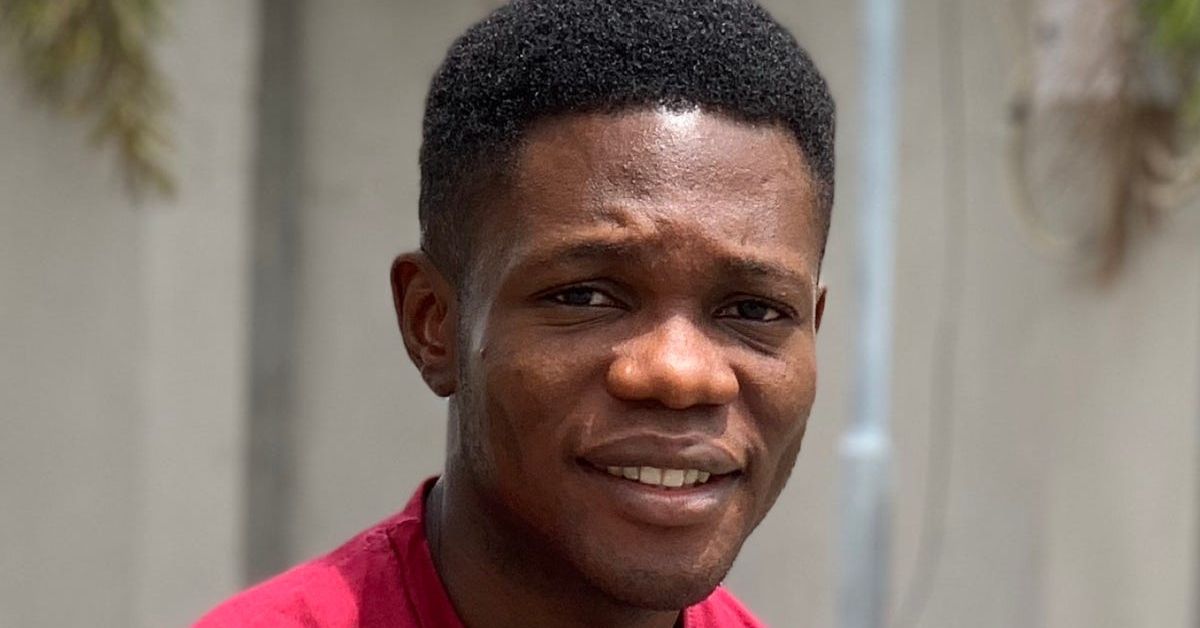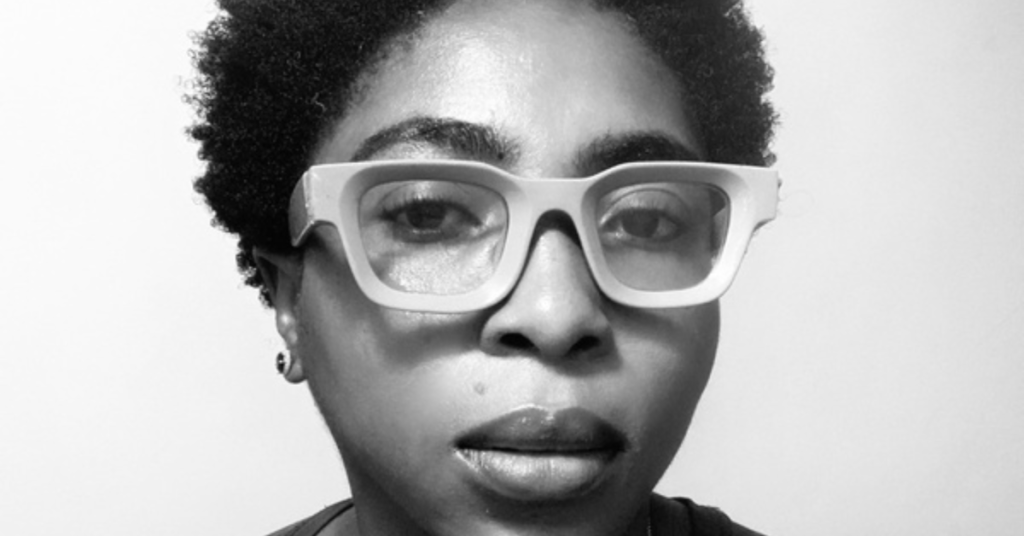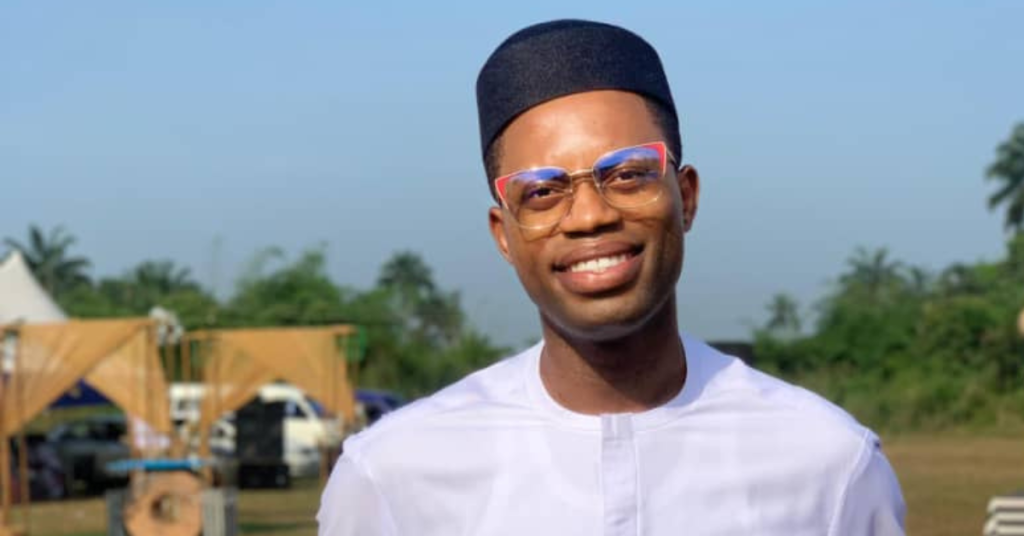In “The Shape of Water,” forthcoming on Akpata Magazine, Doyin Ajayi crafts a haunting exploration of identity, bodily autonomy, and the search for self in a world that refuses to see you. Through the extended metaphor of water—shapeless, molded by others, bearing reflections not its own—Ajayi tells the story of a young Nigerian woman whose tomboyish body becomes a battleground for everyone’s expectations except her own.
Ajayi writes with unflinching honesty about the particular violence faced by those whose bodies refuse to fit prescribed molds. But the story also pulses with something harder to destroy—the protagonist’s stubborn persistence, her refusal to stop running even when running brings her back to the same painful point.
In this conversation, we discuss the metaphor of water, the complexities of writing trauma, the protagonist’s journey toward self-possession, and what it means to keep sprinting toward a version of yourself that only you can see.
1. What inspired you to use water as a symbol for the protagonist’s identity and struggles? Did this imagery shape The Shape of Water from the outset, or did it emerge as you wrote?
I wanted to write a story about a sprinter who was being ridiculed, but I was unsure about the direction it would take. I watch women’s club football, and it’s sadly common to hear slurs and side comments about some players. Many are objectified because of their musculature. That was the inspiration for the story.
I thought of the many ways people treated the protagonist without any regard, and it reminded me of how we use water—hence the symbolic use.
I never initially intended to use water as a symbol for her identity and struggles. It only occurred to me midway through writing the story.
There’s a quote by Ann Beattie: “I don’t begin with a preconceived notion of where a piece of writing is going to end.”
I’m the same way. I usually have only a one-line summary, the broad themes, and a tentative title. Then I let the story write itself.
When I got the idea of water as a symbol for the protagonist’s identity, it guided my writing. It then emerged in the story as a motif. That was subconscious; I only realized it later.
2. How do you view the tension between external forces that define us and the internal struggle to reclaim one’s identity?
It’s a significant struggle. There are voices all around us—people we know, pop culture, fashion trends, traditions—all placing expectations on us and offering recommendations. Everywhere we turn, we’re being told who to be, even when it’s not who we truly are.
For example, when I was at university, I knew a young woman who was constantly pressured by her close circle to wear high heels, even though she disliked them.
Building our identity solely on these external voices is shaky and dangerous. It can lead to an identity crisis. Yet, within us, there’s a desire to become someone shaped by our own perceptions and characteristics.
This external–internal conflict exists whether we acknowledge it or not. Introspection and deep reflection help us reclaim our identity amid all the competing voices around us.
3. The protagonist faces ridicule for their “tomboyish” traits and struggles against rigid gender expectations. What message were you hoping to convey about the impact of societal norms on individual identity, particularly in the context of gender?
Societal norms are powerful and can shape identities. They dictate accepted behaviors, personality traits, and gender expectations. For instance, “boys shouldn’t cry” is a very common one. While some of these conventions might have good intentions, people who don’t conform to them often face stigmatization, which reduces their confidence.
They can limit self-expression and hinder the actualization of potential. For example, despite all her talent, the protagonist may never run professionally due to all the nasty memories she has.
Societal norms can limit the full expression of self. This can have detrimental effects. It’s like something within you wanting expression but being unable to emerge because of a harsh atmosphere. Then it rots and dies inside you, turning toxic and poisoning the mind.
I hoped to convey a message about the complexity of individual identity where societal norms are concerned. Individual identity is too broad and too complex to be boxed in by the strict confines of societal norms. Otherwise, we would never have male chefs and male nurses, nor would we have female leaders and female boxers.
4. The moment when the protagonist realizes, “It was never about you. It was them,” is a pivotal shift. How do you see this realization shaping her resilience? More broadly, what do you believe enables individuals to break free from the identities others impose on them?
I believe there’s a point we reach in life when certain things dawn on us. It’s that “aha!” moment when things we thought we knew unravel before us and become plain.
Clarity, especially in moments like that, is like the breaking of dawn, dispelling darkness.
For the protagonist, that was her turning point. It made her tougher and more accepting of herself. It reduced the blame she placed on herself and set her on the path to finding healing and a measure of peace within.
I believe self-acceptance is the major step toward living free from the shackles of the tags others impose on us. Other people’s perceptions don’t define you. We often say, “If you don’t love yourself, nobody will.” As simple as it sounds, it’s powerful. Even more powerful is realizing that, even if you love yourself, some still won’t.
And that’s okay. Love yourself anyway.
5. Writing a story with such emotional and thematic weight must have been a complex journey. What was the most challenging aspect of crafting The Shape of Water, and what was the most rewarding moment for you as a writer?
I would describe myself as an empath, which is why most of my stories are written in the first person. Through deep thinking, I can often identify with certain feelings and channel them onto the page. Readers frequently ask me, “Did that happen to you? It felt so real.” And I reply, “No, it’s fiction.” Research helps me fill in whatever blanks remain.
The most challenging aspect was slipping into the protagonist’s skin—feeling her pain and bleeding it out on paper. Writing from the perspective of an abused young woman was hard. Being a man, writing from a woman’s perspective made it even harder. Because the story deals with dark themes, I also had to handle it with sensitivity and nuance.
The most rewarding aspect was the lightness I felt when I finished it. I felt I had written a story truly worthy of being read.
6. The story leaves readers with a powerful image of the protagonist sprinting, unhindered, despite their pain. What do you hope readers, especially those who may relate to the protagonist’s struggles, take away from this story?
Rather than water (the protagonist) being confined by the expectations of others, she is now free—like water flowing, making its own path and choosing where to go.
At the end of the day, just like the protagonist, those whispers and shouts will always be there. Some people will never accept who you are. You simply have to keep living, blocking out the noise. That’s what her running at the end signifies—finding comfort and strength in something she loves, regardless of the noise around her.
I hope the story leaves readers with the strength to reclaim themselves, to be happy and confident in their own skin, to shine rather than hide their uniqueness, to find solace in the activities they were once mocked for enjoying, and, most importantly, to find healing in broken places.
Because great writing shouldn’t be hard to find. Subscribe to get the best reads in your inbox.




